| Mammals by population |
|---|
 |
This is a list of odd-toed ungulate species by estimated global population. This list misses data on Tapirus terrestris, which has not yet been estimated.
| Common name | Binomial name | Population | Status | Trend | Notes | Image |
|---|---|---|---|---|---|---|
| Javan rhinoceros | Rhinoceros sondaicus | 68 | CR [1] | Maximum Estimate. It is only found in Ujung Kulon national park in the islands of Java, Indonesia. | 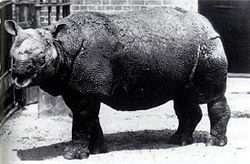 | |
| Sumatran rhinoceros | Dicerorhinus sumatrensis | 34–47 | CR [2] | Maximum estimate. [2] | 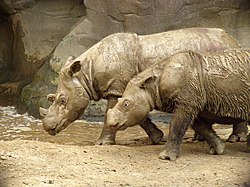 | |
| Przewalski's horse | Equus ferus przewalskii | 178 [3] | EN [3] | Wild numbers only. Previously extinct in the wild. [3] |  | |
| African wild ass | Equus africanus | 600 [4] | CR [4] | Maximum estimate. A small population may still exist in Somalia. [4] |  | |
| Malayan tapir | Tapirus Indicus | 1,500–2,500 [5] | EN |  | ||
| Grévy's zebra | Equus grevyi | 2,350 [6] | EN [6] |  | ||
| Mountain tapir | Tapirus pinchaque | 2,500 [7] | EN [7] | Maximum estimate. [7] |  | |
| Indian rhinoceros | Rhinoceros unicornis | 3,588 [8] | VU [8] | It increased from 75 in 1905 to 3,600 currently in 115 years. It is upgraded from endangered to vulnerable. |  | |
| Black rhinoceros | Diceros bicornis | 3,142 [9] | CR [9] | Four subspecies: Southern-central (2,220), South-western (1,920), Eastern (740), and Western (0; considered recently extinct). [9] |  | |
| Baird's tapir | Tapirus bairdii | 5,500 [10] | EN [10] | Maximum estimate. [10] |  | |
| White rhinoceros | Ceratotherium simum | 10,080 [11] | NT [11] |  | ||
| South American tapir | Tapirus terrestris | 2,665 - 15,992 [12] | VU [13] |  | ||
| Mountain zebra | Equus zebra | 26,500 [14] | VU [14] | Unknown [14] | Two subspecies: Hartmann's (25,000) & Cape (1,500). [14] |  |
| Onager | Equus hemionus | 28,000 [15] | NT [15] |  | ||
| Kiang | Equus kiang | 60,000–70,000 [16] | LC [16] |  | ||
| Plains zebra | Equus quagga | 500,000 [17] | NT [17] | 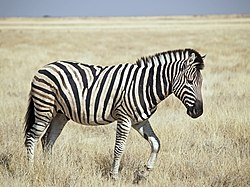 | ||
| Mule | Equus asinus x Equus caballus | 10,000,000 [18] | Domesticated | 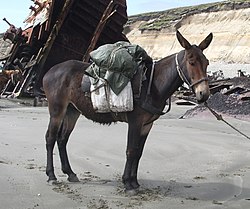 | ||
| Donkey | Equus africanus asinus | 40,000,000 [19] | Domesticated |  | ||
| Horse | Equus ferus caballus | 58,000,000 [20] | Domesticated | 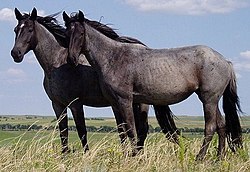 | ||
